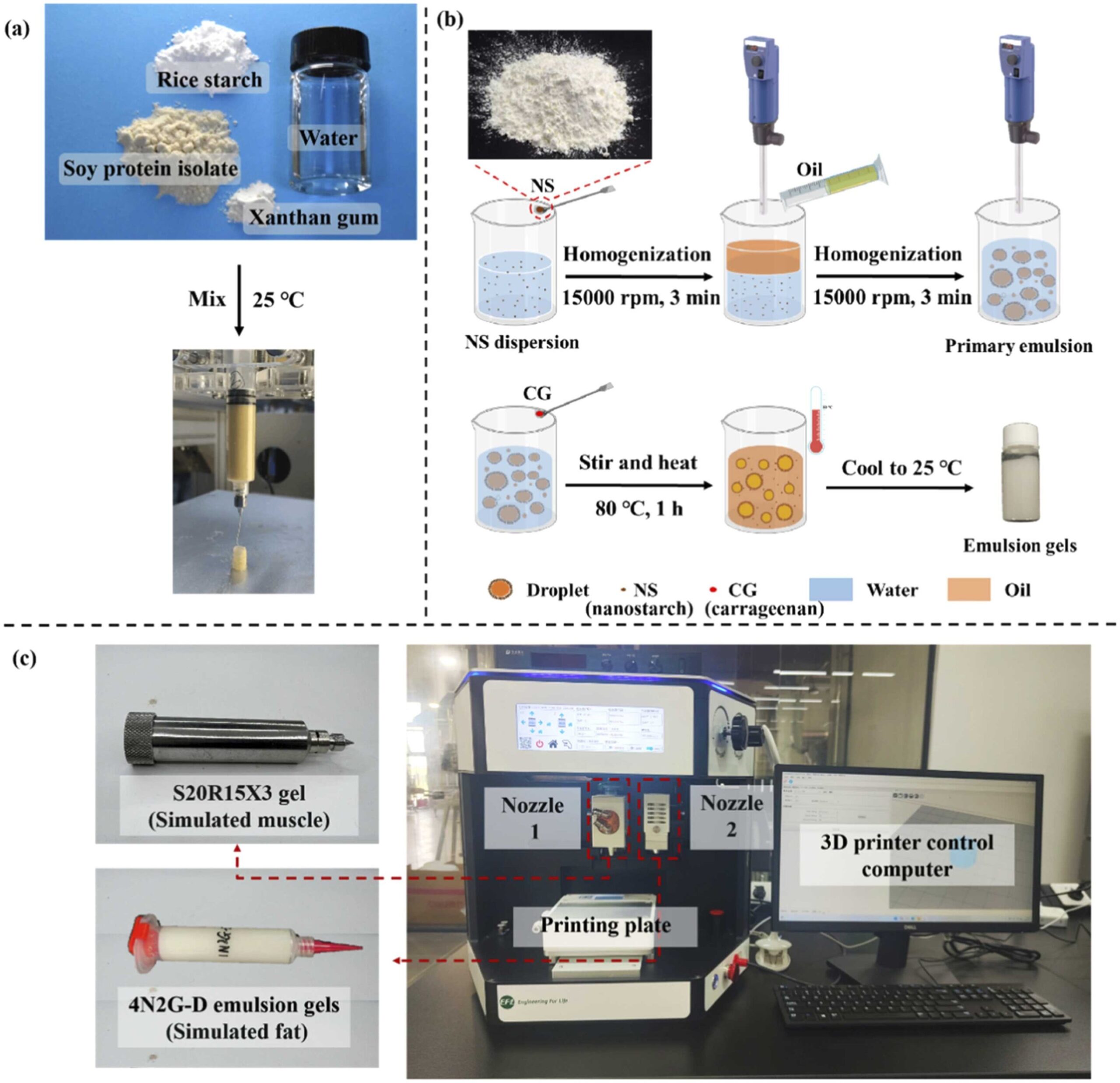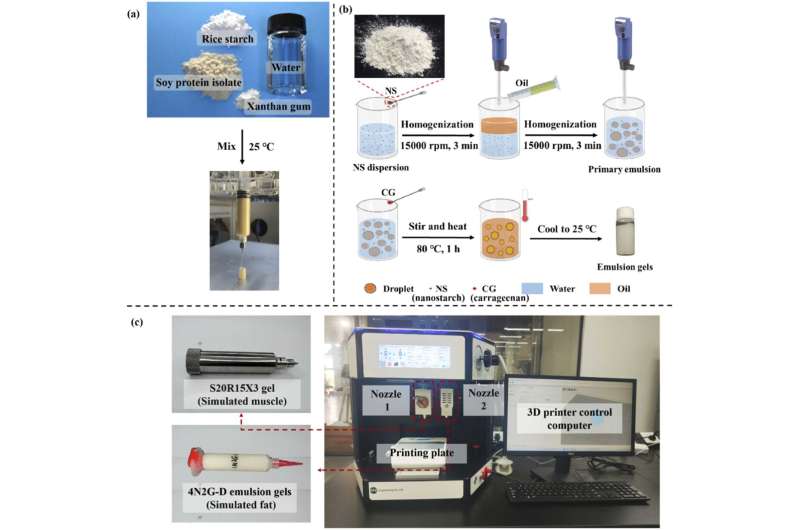

To date, about 90% of fish resources worldwide have already reached their sustainable fishery limit. Meanwhile, intensive farming and aquaculture contribute to significant environmental pollution and degradation. To address both the challenges of limited production efficiency and environmental harm, plant-based fish alternatives have emerged as a potential solution to traditional fisheries.
In a recent study published in Food Physics, a team of researchers from China successfully created plant-based simulated yellow croaker meat tissues by dual-nozzle 3D printing.
“Based on micro-CT scanning data, a muscle/fat biphasic high-simulation model for 3D printing yellow croaker meat in three parts (the dorsal, the base of the belly flesh, and the tail) was constructed via CAD reconstruction,” explains Enbo Xu, senior and corresponding author of the study. “We used soy protein isolate–xanthan gum-starch complex as simulated muscle ink and nanostarch-carrageenan emulsion gel as simulated fat ink.”
After the completion of a series of immersion treatments, the fish were stained with an iodine solution, with the aim of distinguishing the distribution of fat and muscle. Nonetheless, there was the challenge of adjusting the parameters of multi-nozzle 3D printing to achieve high precision.
“We optimized the printing process by controlling the dual-nozzle printing process parameters, including manual calibration of the dual-nozzle offset, layer height, fill rate, printing speed, air pressure, etc.,” said lead author Jie Li. “Ultimately, a dual-nozzle 3D-printed product of plant-based fish flesh was successfully created, with a printing accuracy of more than 90% for the composite structure.”
The texture, moisture distribution and nutrient content of the simulated fish meat were analyzed and compared with real yellow croaker meat. The team reported that the texture characteristics, moisture distribution and content of many nutrients in the simulated fish were close to those of real fish.
More information:
Jie Li et al, Simulated construction of plant-based fish meat with composite structure via dual-nozzle extrusion 3D printing, Food Physics (2024). DOI: 10.1016/j.foodp.2024.100028
Citation:
Simulated construction of plant-based fish meat with composite structure via 3D printing (2024, September 19)
retrieved 19 September 2024
from https://phys.org/news/2024-09-simulated-based-fish-meat-composite.html
This document is subject to copyright. Apart from any fair dealing for the purpose of private study or research, no
part may be reproduced without the written permission. The content is provided for information purposes only.